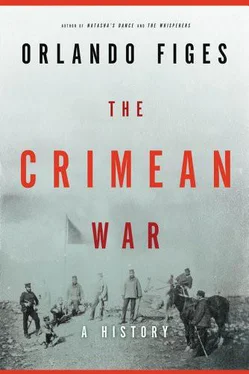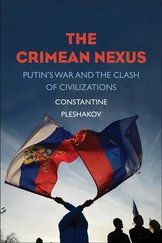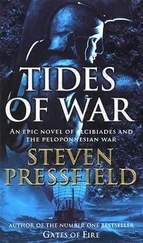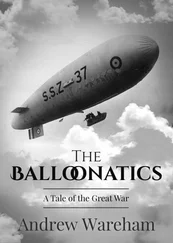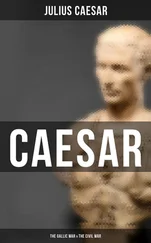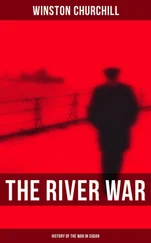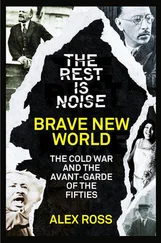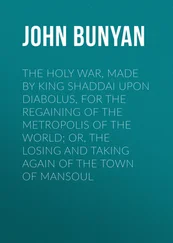On this Good Friday the Latin priests arrived with their white linen altar-cloth to find that the Greeks had got there first with their silk embroidered cloth. The Catholics demanded to see the Greeks’ firman, their decree from the Sultan in Constantinople, empowering them to place their silk cloth on the altar first. The Greeks demanded to see the Latins’ firman allowing them to remove it. A fight broke out between the priests, who were quickly joined by monks and pilgrims on either side. Soon the whole church was a battlefield. The rival groups of worshippers fought not only with their fists, but with crucifixes, candlesticks, chalices, lamps and incense-burners, and even bits of wood which they tore from the sacred shrines. The fighting continued with knives and pistols smuggled into the Holy Sepulchre by worshippers of either side. By the time the church was cleared by Mehmet Pasha’s guards, more than forty people lay dead on the floor. 1
‘See here what is done in the name of religion!’ wrote the English social commentator Harriet Martineau, who travelled to the Holy Lands of Palestine and Syria in 1846.
This Jerusalem is the most sacred place in the world, except Mekkeh, to the Mohammedan: and to the Christian and the Jew, it is the most sacred place in the world. What are they doing in this sanctuary of their common Father, as they all declare it to be? Here are the Mohammedans eager to kill any Jew or Christian who may enter the Mosque of Omar. There are the Greeks and Latin Christians hating each other, and ready to kill any Jew or Mohammedan who may enter the Church of the Holy Sepulchre. And here are the Jews, pleading against their enemies, in the vengeful language of their ancient prophets. 2
The rivalry between the Christian Churches was intensified by the rapid growth in the number of pilgrims to Palestine in the nineteenth century. Railways and steamships made mass travel possible, opening up the region to tour-groups of Catholics from France and Italy and to the devout middle classes of Europe and America. The various Churches vied with one another for influence. They set up missions to support their pilgrims, competed over purchases of land, endowed bishoprics and monasteries, and established schools to convert the Orthodox Arabs (mainly Syrian and Lebanese), the largest but least educated Christian community in the Holy Lands.
‘Within the last two years considerable presents have been sent to Jerusalem to decorate the Church of the Holy Sepulchre by the Russian, French, Neapolitan and Sardinian governments,’ reported William Young, the British consul in Palestine and Syria, to Lord Palmerston at the Foreign Office in 1839.
There are many symptoms of increasing jealousy and inimical feeling among the churches. The petty quarrels that have always existed between the Latin, Greek and Armenian convents were of little moment so long as their differences were settled from time to time by the one giving a larger bribe to the Turkish authorities than the other. But that day passes by, for these countries are now no longer closed against European intrigue in church matters. 3
Between 1842 and 1847 there was a flurry of activity in Jerusalem: the Anglicans founded a bishopric; the Austrians set up a Franciscan printing press; the French established a consulate in Jerusalem and pumped money into schools and churches for the Catholics; Pope Pius IX re-established a resident Latin patriarch, the first since the Crusades of the twelfth century; the Greek patriarch returned from Constantinople to tighten his hold on the Orthodox; and the Russians sent an ecclesiastical mission, which led to the foundation of a Russian compound with a hostel, hospital, chapel, school and marketplace to support the large and growing number of Russian pilgrims.
In the early decades of the nineteenth century, the Russian Orthodox Church sent more pilgrims to Jerusalem than any other branch of the Christian faith. Every year up to 15,000 Russian pilgrims would arrive in Jerusalem for the Easter festival, some even making the long trek on foot across Russia and the Caucasus, through Anatolia and Syria. For the Russians, the holy shrines of Palestine were objects of intense and passionate devotion: to make a pilgrimage to them was the highest possible expression of their faith.
In some ways the Russians saw the Holy Lands as an extension of their spiritual motherland. The idea of ‘Holy Russia’ was not contained by any territorial boundaries; it was an empire of the Orthodox with sacred shrines throughout the lands of Eastern Christianity and with the Holy Sepulchre as its mother church. ‘Palestine’, wrote one Russian theologian in the 1840s, ‘is our native land, in which we do not recognize ourselves as foreigners.’ 4Centuries of pilgrimage had laid the basis of this claim, establishing a link between the Russian Church and the Holy Places (connected with the life of Christ in Bethlehem, Jerusalem and Nazareth) which many Russians counted more important – the basis of a higher spiritual authority – than the temporal and political sovereignty of the Ottomans in Palestine.
Nothing like this ardour could be found among the Catholics or Protestants, for whom the Holy Places were objects of historical interest and romantic sentiment rather than religious devotion. The travel writer and historian Alexander Kinglake thought that ‘the closest likeness of a pilgrim which the Latin Church could supply was often a mere French tourist with a journal and a theory and a plan of writing a book’. European tourists were repelled by the intense passion of the Orthodox pilgrims, whose strange rituals struck them as ‘barbaric’ and as ‘degrading superstitions’. Martineau refused to go to the Holy Sepulchre to see the washing of the pilgrims’ feet on Good Friday. ‘I could not go to witness mummeries done in the name of Christianity,’ she wrote, ‘compared with which the lowest fetishism on the banks of an African river would have been inoffensive.’ For the same reason, she would not go to the ceremony of the Holy Fire on Easter Saturday, when thousands of Orthodox worshippers squeezed into the Holy Sepulchre to light their torches from the miraculous flames that appeared from the tomb of Christ. Rival groups of Orthodox-Greeks, Bulgarians, Moldavians, Serbians and Russians – would jostle with each other to light their candles first; fights would start; and sometimes worshippers were crushed to death or suffocated in the smoke. Baron Curzon, who witnessed one such scene in 1834, described the ceremony as a ‘scene of disorder and profanation’ in which the pilgrims, ‘almost in a state of nudity, danced about with frantic gestures, yelling and screaming as if they were possessed’. 5
It is hardly surprising that a Unitarian such as Martineau or an Anglican like Curzon should have been so hostile to such rituals: demonstrations of religious emotion had long been effaced from the Protestant Church. Like many tourists in the Holy Land, they sensed that they had less in common with the Orthodox pilgrims, whose wild behaviour seemed barely Christian at all, than with the relatively secular Muslims, whose strict reserve and dignity were more in sympathy with their own private forms of quiet prayer. Attitudes like theirs were to influence the formation of Western policies towards Russia in the diplomatic disputes about the Holy Land which would eventually lead to the Crimean War.
Unaware of and indifferent to the importance of the Holy Lands to Russia’s spiritual identity, European commentators saw only a growing Russian menace to the interests of the Western Churches there. In the early 1840s, Young, now the British consul, sent regular reports to the Foreign Office about the steady build-up of ‘Russian agents’ in Jerusalem – their aim being, in his view, to prepare a ‘Russian conquest of the Holy Lands’ through sponsored pilgrimage and purchases of land for Orthodox churches and monasteries. This was certainly a time when the Russian ecclesiastical mission was exerting its influence on the Greek, Armenian and Arab Orthodox communities by financing churches, schools and hostels in Palestine and Syria (an activism resisted by the Foreign Ministry in St Petersburg, which rightly feared that such activities might antagonize the Western powers). Young’s reports about Russia’s conquest plans were increasingly hysterical. ‘The pilgrims of Russia have been heard to speak openly of the period being at hand when this country will be under the Russian government,’ he wrote to Palmerston in 1840. ‘The Russians could in one night during Easter arm 10,000 pilgrims within the walls of Jerusalem. The convents in the city are spacious and, at a trifling expense, might be converted into fortresses.’ British fears of this ‘Russian plan’ accelerated Anglican initiatives, eventually leading to the foundation of the first Anglican church in Jerusalem in 1845. 6
Читать дальше
